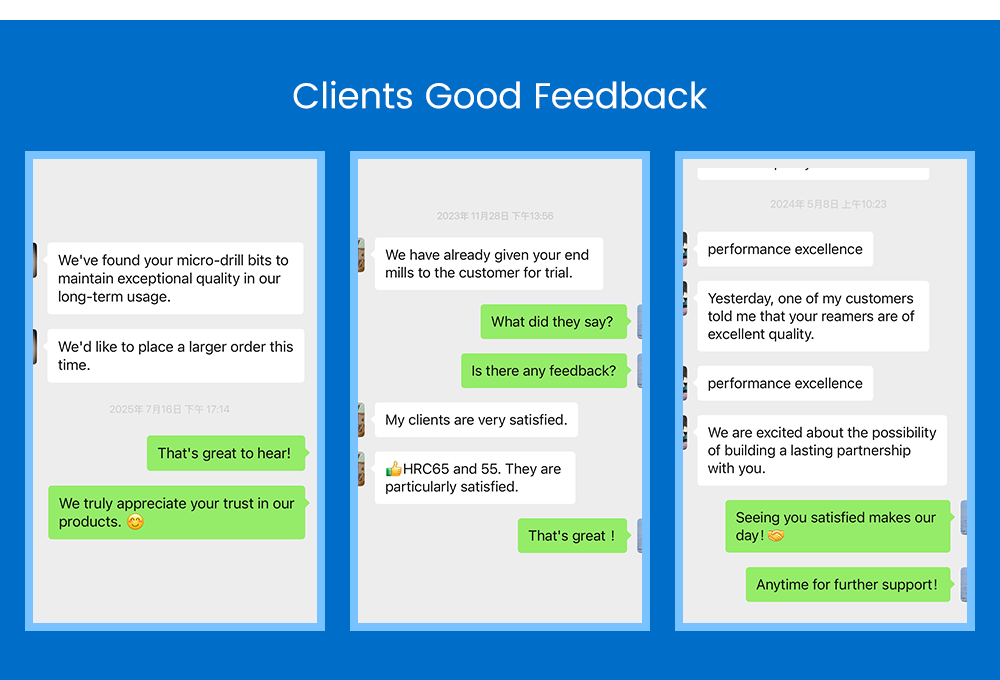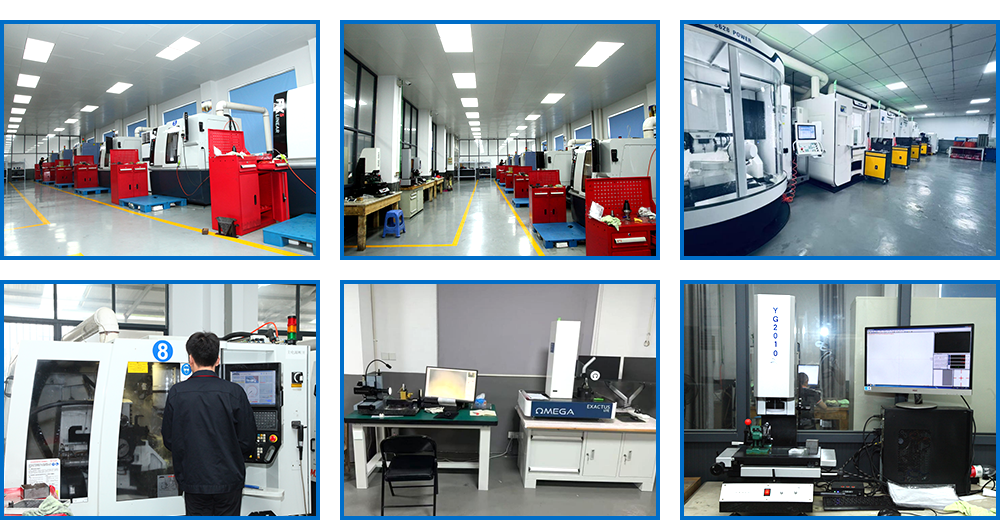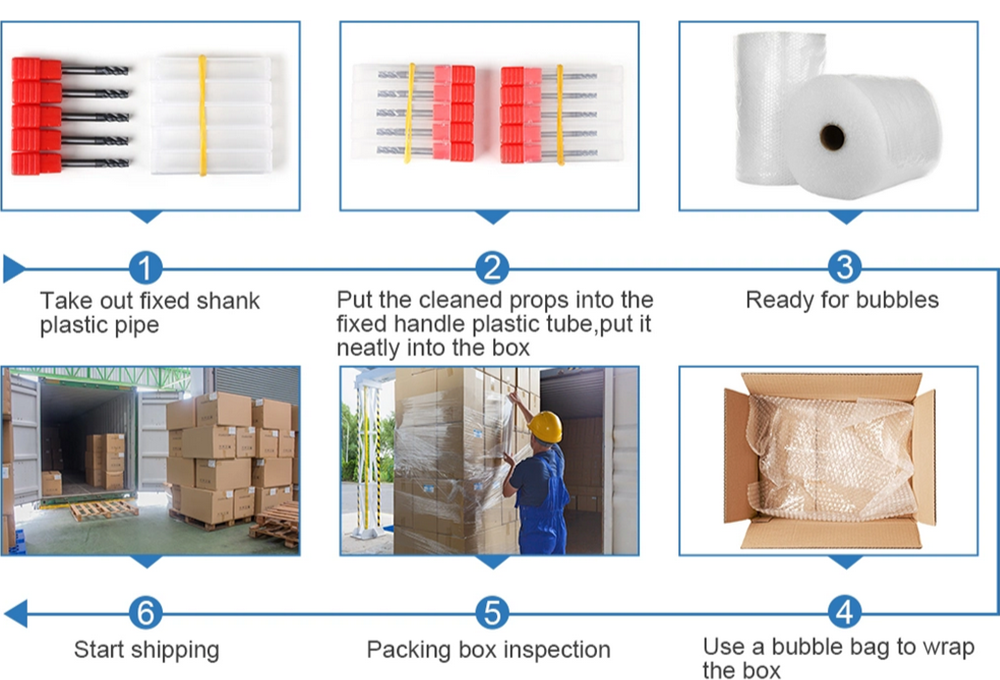English
- All
- Product Name
- Product Keyword
- Product Model
- Product Summary
- Product Description
- Multi Field Search
| SKU: | |
|---|---|
| Availability: | |
| Quantity: | |
HRC56 Carbide End Mills
Master demanding hard milling applications with SUPSTTED's premium HRC56 End Mills.
Engineered for exceptional performance in hardened steels up to 56 HRC (Rockwell Hardness C scale), these high-performance solid carbide end mills deliver the toughness, wear resistance, and precision your shop demands for critical jobs.

Built for Extreme Conditions:
Hardened Steel Specialists: Specifically designed to machine challenging materials like hardened tool steels (H13, D2, A2), alloy steels, and pre-hardened steels (up to 45 HRC) efficiently and reliably.
Advanced Carbide Substrate: Utilizes ultra-fine grain, high-rigidity carbide for superior strength and resistance to chipping and fracture under high-stress cutting in hard materials.
High-Performance Coatings: Features specialized coatings like AlCrN (Aluminum Chromium Nitride) or TiAlN (Titanium Aluminum Nitride) for extreme hardness, reduced friction, and exceptional thermal stability. This drastically enhances tool life by resisting abrasive wear and built-up edge formation.
Optimized Geometry: Incorporates robust core designs, variable helix/pitch angles, and carefully honed cutting edges to minimize vibrations, ensure stable cutting action, and evacuate chips effectively, even in deep cavities and challenging profiles.
Unlock Productivity & Cost Savings:
Extended Tool Life: The combination of premium carbide and advanced coatings translates to significantly longer tool life compared to standard end mills, reducing tooling costs and changeover frequency.
Superior Surface Finish: Achieve excellent surface quality on hardened components, minimizing the need for secondary finishing operations.
Increased Feed Rates: Engineered geometries allow for more aggressive machining parameters, boosting productivity without sacrificing tool integrity or part accuracy.
Enhanced Process Reliability: Predictable performance and reduced risk of catastrophic tool failure ensure consistent results and smoother production flow.
Ideal Applications:
Die & Mold Manufacturing (hard milling cores, cavities, inserts)
Aerospace Components (hardened structural parts)
Automotive Tooling
General Hardened Steel Machining (shafts, gears, fixtures)
Show Details

Specitications
| SIZES(D*fL*sD*L) | |
| D1*3*D4*50L | D5*(13/20/25)*D5*(50/75/100)L |
| D1.5*4.5*D4*50L | D6*(15/24/30)*D6*(50/75/100)L |
| D2*6*D4*50L | D8*(20/30/35)*D8*(50/75/100)L |
| D2.5*7.5*D4*50L | D10*(25/40)*D10*(75/100)L |
| D3*9*D4*50L | D12*(30/45)*D12*(75/100)L |
| D3*(9/12/15)*D3*(50/75/100)L | D14/D16/D18/D20/D25*100L |
| D4*(10/16/20)*D4*(50/75/100)L | D6/D8/D10/D12/D14/D16/D18/D20*150L |
Clients Good Feedback

Factory

Service Introduction

Logistics Package

FAQ
Q1: What exactly does "HRC56" mean for these end mills?
A: "HRC56" refers to the hardness rating (56 on the Rockwell C scale) of the hardened steels these end mills are specifically engineered to machine. The end mills themselves are made from premium micro-grain carbide and often feature specialized coatings (like AlTiN or TiAlN), making them significantly harder, more heat-resistant, and more wear-resistant than standard end mills. This allows them to effectively cut materials hardened to approximately 56 HRC and above.
Q2: What types of materials can I cut with HRC56 end mills?
A: HRC56 end mills are designed for hard milling applications. They excel on materials hardened to 45-65+ HRC, including:
Tool and Die Steels (e.g., H13, D2, A2)
Hardened Alloy Steels
Case-Hardened Steels
Hardened Stainless Steels (e.g., 17-4PH, 420, 440C)
Hardened Powdered Metals
Avoid: Soft materials (like aluminum or mild steel), as they can cause excessive edge chipping or built-up edge.
Q3: Do I need to run HRC56 end mills differently than standard end mills?
A: Yes, absolutely. Hard milling requires conservative parameters:
Lower Speeds (SFM): Reduce surface footage significantly compared to softer materials to minimize heat generation and tool wear. Start with manufacturer recommendations.
Moderate Feeds (IPT): Maintain adequate chip load to prevent rubbing but avoid excessive force that can fracture the brittle carbide. Use chip-thinning calculations for light radial engagements.
Light Depths of Cut: Use shallow axial depths of cut (DOC) and stepovers (radial DOC), especially for finishing. Roughing can use slightly deeper DOC but still within conservative limits.
Climb Milling: Always preferred for hard milling to improve tool life and surface finish.
Q4: Is coolant necessary when using HRC56 end mills?
A: Emphatically Yes. Effective cooling/lubrication is CRITICAL. Use either:
High-Pressure Through-Spindle Coolant (HPTS): Ideal for chip evacuation and cooling the cutting zone deep in the cut. Minimum 70-100 PSI is common, higher is better.
Air/Oil Mist (Minimum): If HPTS isn't available, a robust air/oil mist system is essential to manage heat and lubricate the cut.
Avoid: Dry machining or inadequate flood coolant, as heat buildup will rapidly destroy the tool.
Q5: What tool life can I expect from an HRC56 end mill?
A: Tool life varies significantly based on:
* The exact material hardness and composition.
* The aggressiveness of your machining parameters (speed, feed, DOC).
* Stability of your machine tool and setup (vibration kills tools).
* Effectiveness of coolant application.
HRC56 Carbide End Mills
Master demanding hard milling applications with SUPSTTED's premium HRC56 End Mills.
Engineered for exceptional performance in hardened steels up to 56 HRC (Rockwell Hardness C scale), these high-performance solid carbide end mills deliver the toughness, wear resistance, and precision your shop demands for critical jobs.

Built for Extreme Conditions:
Hardened Steel Specialists: Specifically designed to machine challenging materials like hardened tool steels (H13, D2, A2), alloy steels, and pre-hardened steels (up to 45 HRC) efficiently and reliably.
Advanced Carbide Substrate: Utilizes ultra-fine grain, high-rigidity carbide for superior strength and resistance to chipping and fracture under high-stress cutting in hard materials.
High-Performance Coatings: Features specialized coatings like AlCrN (Aluminum Chromium Nitride) or TiAlN (Titanium Aluminum Nitride) for extreme hardness, reduced friction, and exceptional thermal stability. This drastically enhances tool life by resisting abrasive wear and built-up edge formation.
Optimized Geometry: Incorporates robust core designs, variable helix/pitch angles, and carefully honed cutting edges to minimize vibrations, ensure stable cutting action, and evacuate chips effectively, even in deep cavities and challenging profiles.
Unlock Productivity & Cost Savings:
Extended Tool Life: The combination of premium carbide and advanced coatings translates to significantly longer tool life compared to standard end mills, reducing tooling costs and changeover frequency.
Superior Surface Finish: Achieve excellent surface quality on hardened components, minimizing the need for secondary finishing operations.
Increased Feed Rates: Engineered geometries allow for more aggressive machining parameters, boosting productivity without sacrificing tool integrity or part accuracy.
Enhanced Process Reliability: Predictable performance and reduced risk of catastrophic tool failure ensure consistent results and smoother production flow.
Ideal Applications:
Die & Mold Manufacturing (hard milling cores, cavities, inserts)
Aerospace Components (hardened structural parts)
Automotive Tooling
General Hardened Steel Machining (shafts, gears, fixtures)
Show Details

Specitications
| SIZES(D*fL*sD*L) | |
| D1*3*D4*50L | D5*(13/20/25)*D5*(50/75/100)L |
| D1.5*4.5*D4*50L | D6*(15/24/30)*D6*(50/75/100)L |
| D2*6*D4*50L | D8*(20/30/35)*D8*(50/75/100)L |
| D2.5*7.5*D4*50L | D10*(25/40)*D10*(75/100)L |
| D3*9*D4*50L | D12*(30/45)*D12*(75/100)L |
| D3*(9/12/15)*D3*(50/75/100)L | D14/D16/D18/D20/D25*100L |
| D4*(10/16/20)*D4*(50/75/100)L | D6/D8/D10/D12/D14/D16/D18/D20*150L |
Clients Good Feedback

Factory

Service Introduction

Logistics Package

FAQ
Q1: What exactly does "HRC56" mean for these end mills?
A: "HRC56" refers to the hardness rating (56 on the Rockwell C scale) of the hardened steels these end mills are specifically engineered to machine. The end mills themselves are made from premium micro-grain carbide and often feature specialized coatings (like AlTiN or TiAlN), making them significantly harder, more heat-resistant, and more wear-resistant than standard end mills. This allows them to effectively cut materials hardened to approximately 56 HRC and above.
Q2: What types of materials can I cut with HRC56 end mills?
A: HRC56 end mills are designed for hard milling applications. They excel on materials hardened to 45-65+ HRC, including:
Tool and Die Steels (e.g., H13, D2, A2)
Hardened Alloy Steels
Case-Hardened Steels
Hardened Stainless Steels (e.g., 17-4PH, 420, 440C)
Hardened Powdered Metals
Avoid: Soft materials (like aluminum or mild steel), as they can cause excessive edge chipping or built-up edge.
Q3: Do I need to run HRC56 end mills differently than standard end mills?
A: Yes, absolutely. Hard milling requires conservative parameters:
Lower Speeds (SFM): Reduce surface footage significantly compared to softer materials to minimize heat generation and tool wear. Start with manufacturer recommendations.
Moderate Feeds (IPT): Maintain adequate chip load to prevent rubbing but avoid excessive force that can fracture the brittle carbide. Use chip-thinning calculations for light radial engagements.
Light Depths of Cut: Use shallow axial depths of cut (DOC) and stepovers (radial DOC), especially for finishing. Roughing can use slightly deeper DOC but still within conservative limits.
Climb Milling: Always preferred for hard milling to improve tool life and surface finish.
Q4: Is coolant necessary when using HRC56 end mills?
A: Emphatically Yes. Effective cooling/lubrication is CRITICAL. Use either:
High-Pressure Through-Spindle Coolant (HPTS): Ideal for chip evacuation and cooling the cutting zone deep in the cut. Minimum 70-100 PSI is common, higher is better.
Air/Oil Mist (Minimum): If HPTS isn't available, a robust air/oil mist system is essential to manage heat and lubricate the cut.
Avoid: Dry machining or inadequate flood coolant, as heat buildup will rapidly destroy the tool.
Q5: What tool life can I expect from an HRC56 end mill?
A: Tool life varies significantly based on:
* The exact material hardness and composition.
* The aggressiveness of your machining parameters (speed, feed, DOC).
* Stability of your machine tool and setup (vibration kills tools).
* Effectiveness of coolant application.
content is empty!